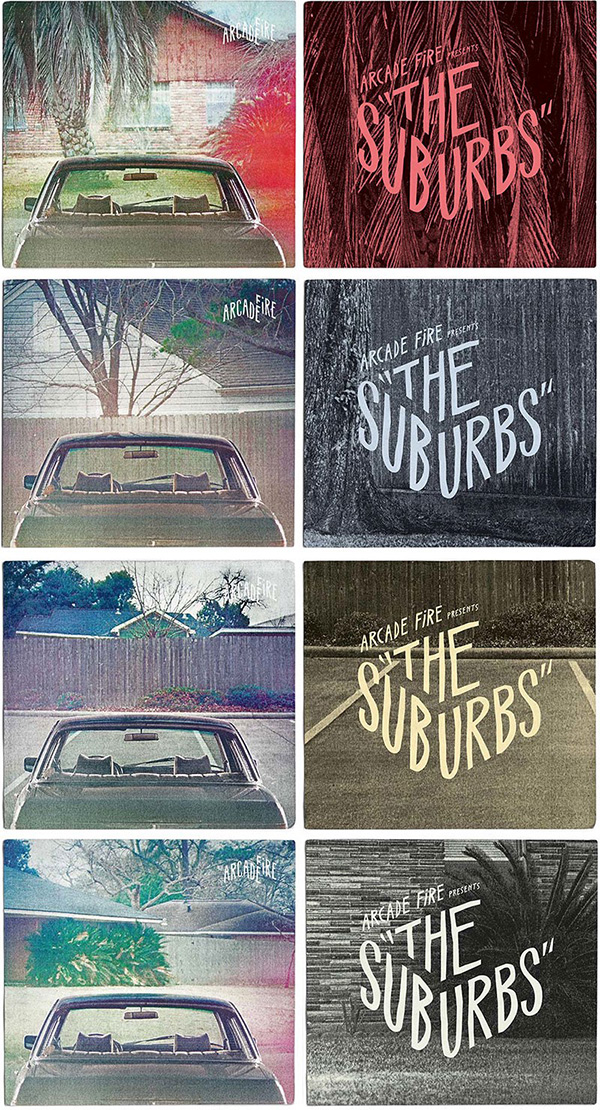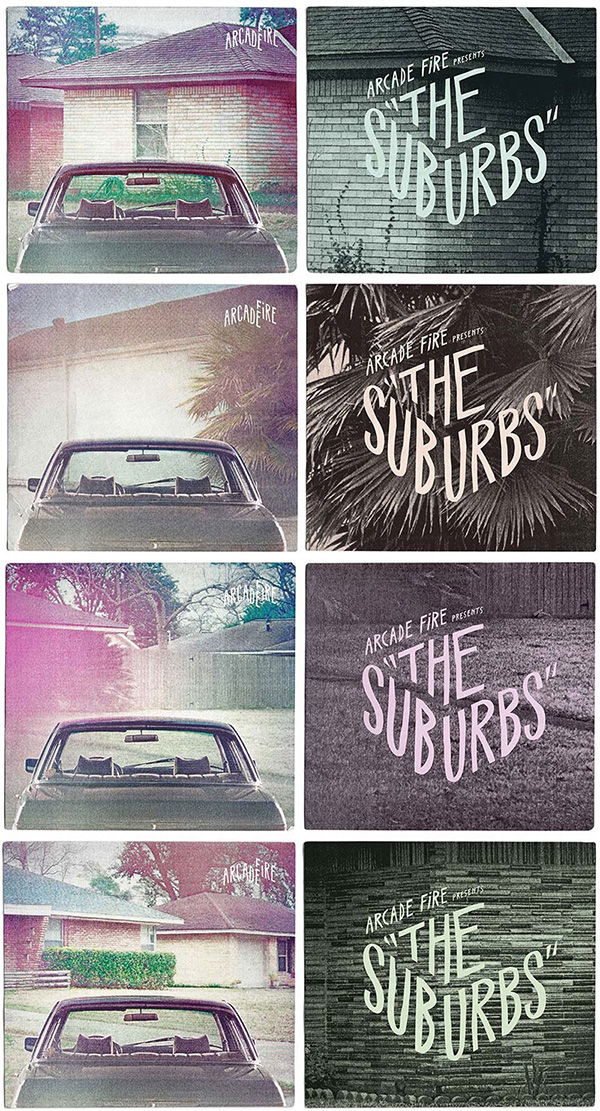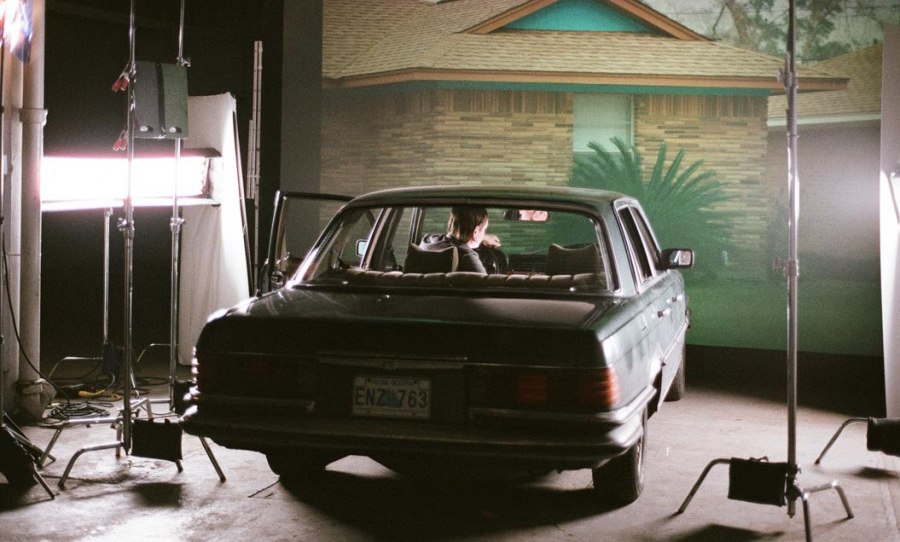If you purchased an original copy of Arcade Fire’s The Suburbs in 2010 you were presented with one of eight album covers: eight variations of the same car parked outside a suburban home. Only one remains etched into every indie rock fan’s brain – that brick house with the pine tree has become as recognisable as the music of The Suburbs.
Arcade Fire always had an affiliation with suburbia. Their debut album Funeral opens with Neighbourhood, a four-part opus that centred around suburban adolescence. When the Montreal band announced their third album, The Suburbs, accompanied by the title track, it felt like a natural progression.

Arcade Fire wanted the album art for their 2010 album The Suburbs to be a cinematic representation of its music, and they were prepared to drive for 30 hours to create it.
Publications that had been heaping praise onto them rejoiced. Pitchfork’s article about the announcement read “Finally! Arcade Fire have announced on their website that their third album, The Suburbs, will be released,” and concluded with a giddy single-word paragraph of child-like glee, “Yes.” Another music site, Speakers In Code, ended their article with “Aren’t Thursdays awesome?” The 2010s were an interesting time.
Accompanying the announcement was the now iconic album cover and a press shot of the band casting silhouettes onto a projection of that same house. This press shot served as our first clue to how the album cover came about.
The artwork was created by frequent Arcade Fire collaborators Caroline Robert and Vincent Morisett. It features a 1979 Mercedes Benz 280 SE with a photo of a suburban house projected onto the wall in front of it.
It was an effect often used by Alfred Hitchcock, whose films served as a big influence on Robert and Morisett. In an interview with The Montreal Gazette, Robert said Arcade Fire believed the album was “the soundtrack to a movie that didn’t exist, so it was up to the artwork to fill this space.”

The original plan for the album art was to drive from frontwoman Régine Chassagne’s hometown to frontman Win Butler’s, taking photos along the highway. The 30-hour drive from Longueuil, Quebec to Huston, Texas would have seemed primed for picturesque suburbia, but America’s interstate often passes through the most dull and baron views the country has to offer.
Plan number two was to explore The Woodlands, Butler’s hometown in Huston. Robert, Morisett, and the band drove around The Woodlands looking for streets with a “familiar, timeless mood” Morisett said in the Montreal Gazette interview.
Photos from this trip were then projected onto a wall in front the Mercedes 280 SE to create the timeless images that have become synonymous with the album. Morisett went on to say “We wanted the shot to look like it could have been taken 10 years ago, or 30 years ago, or now, and you wouldn’t be able to tell.”

The album packaging would go on to win a Grammy for Best Recording Packaging alongside The Suburbs’ controversial win in the Best Album category. The band would also have their cinematic vision for the album fulfilled when Spike Jonze directed a 28-min short film soundtracked by the album. Arcade Fire returned the favour, soundtracking Jonze’ 2013 film Her.
The final piece of The Suburbs puzzle existed within a sea of visual art built to enhance the record. There was the aforementioned eight album covers and short film, but as well as the album art, Vincent Morisett created an interactive video for the single Sprawl II in which the viewer is encouraged to dance or move in front of their computer to make the video play, and Caroline Robert compiled a booklet of photographs and linear notes that came fitted with the CD.
Despite all this, one visual stood the test of time: a photograph of a car parked in front of a projection of a suburban house with a palm tree out front.
While you’re here, find out how The Suburbs was recorded in our Engineering the Sound series.


